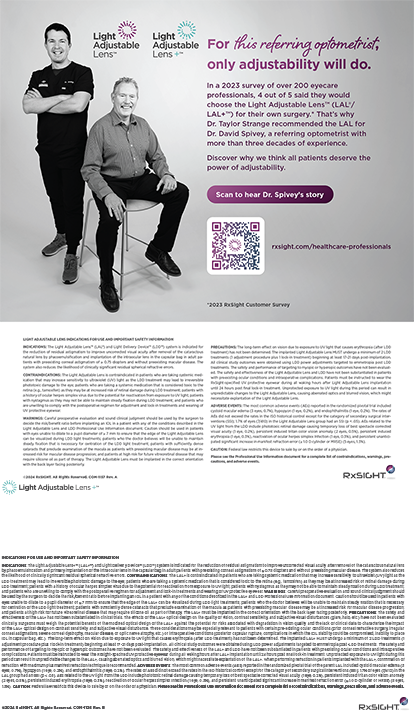I experienced my first and only case of toxic anterior segment syndrome (TASS) in the fall of 2006. My case was one of 37 that occurred at our surgicenter and one of more than 1,000 that occurred nationally. At the time, the cause and epidemic nature were unknown, but it was later discovered that my case was part of a national TASS outbreak caused by an endotoxin in the balanced salt solution.
My patient did well, but I recall the frustration and concern. My first reaction was to protect the patient and differentiate TASS, a sterile, acute, anterior segment, postoperative inflammation from endophthalmitis. In both conditions, the patient may present with decreased vision, a hypopyon, and a cloudy cornea. TASS occurs earlier in the postoperative period, usually within 12 to 24 hours, and endophthalmitis— in all but the most severe cases—takes 3 to 5 days to manifest. In addition, patients with TASS have moderate discomfort, and those with endophthalmitis present with significant pain and photophobia. Several patients who were operated on by other surgeons had already undergone a vitrectomy and injection of intravitreal antibiotics but were culture negative. This knowledge made the diagnosis easier for me and allowed treatment with aggressive topical and oral corticosteroids, which resolved the problem without the patient losing visual acuity.
My colleagues and I, however, had not identified the cause of the epidemic, and immediately, we began tracking patients’ information. Our staff initiated a review of all aseptic techniques, terminal cleaning of the ORs, and instrument processing protocols, paying particular attention to reusable instruments and cleaning solutions. More than 50 environmental cultures of the surgicenter were performed, as well as spore testing of every instrument load that went into the autoclaves: all were normal.
When no definitive cause could be identified, we contacted Nick Mamalis, MD, at the Intermountain Ocular Research Center (IORC) (which was supported by the American Society of Cataract and Refractive Surgery [ASCRS]). We made a simple phone call and spoke with the world’s expert on the subject who confirmed that there was a national epidemic. Dr. Mamalis informed us of the cause of the problem, and he provided reassurance regarding the treatment of our patients. Dr. Mamalis should be recogrecognized for his selfless dedication and contribution to patients’ care and the literature for his work on TASS.
Following this TASS outbreak, the IORC and ASCRS, led by Dr. Mamalis, and the FDA developed a joint TASS task force. The IORC and ASCRS shared their questionnaires and expertise with the FDA, which provided funding and their own expertise to develop new questionnaires and initiate a more proactive TASS program. On the surface, this was the ideal collaboration of experienced clinicians and scientists working with the government to improve patients’ care. This collaboration suddenly and bafflingly ended this year.
In this issue of Cataract & Refractive Surgery Today, we have two articles written by those involved, Dr. Mamalis, cochairman of the ASCRS TASS task force and director of the IORC, and Malvina Eydelman, MD, and colleagues from the FDA. Both articles outline their perspective of why this divorce occurred. Both are now working independently to deal with the identical problem. My experience dictates that I would prefer an immediate response from an individual versus a governmental agency. I recall Ronald Reagan’s famous quotation, “The nine most terrifying words in the English language are: I’m from the government and I’m here to help.”
As an ophthalmologist who has experienced a TASS outbreak, I know that, if given a choice between contacting the world’s expert who is a clinician and colleague or a nonpracticing bureaucrat or scientist, I would choose the former. On the other hand, if the goal is to identify an epidemic and work with industry to recall products, the scientists and epidemiologists that work for the FDA cannot be surpassed. The FDA has dedicated individuals and extraordinary resources. Both groups have special expertise and it is inexplicable to me that this collaboration has dissolved.
Dr. Donnenfeld is the incoming president of the ASCRS.


